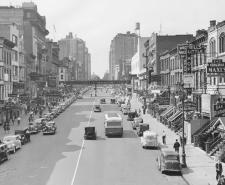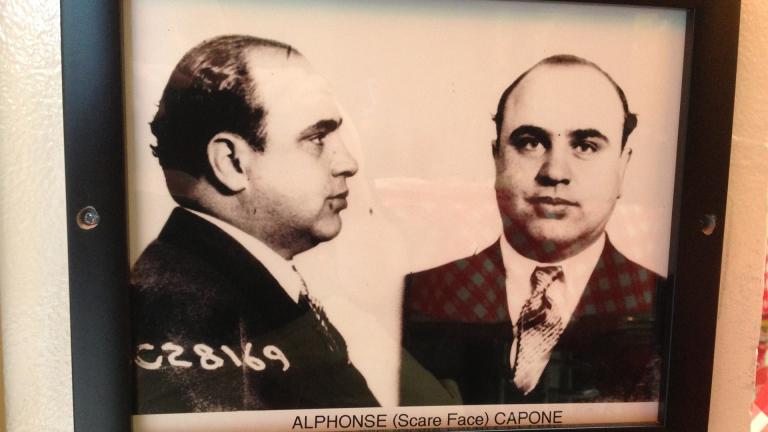
Read more about Women's history

Al Capone’s name is basically shorthand for Prohibition-era wealth. Think armoured Cadillacs, tailored pinstripe suits and a Chicago-based empire (aka the Outfit) that ran on bootleg alcohol.
But how much money did he actually have? To answer that, the Sky HISTORY team has unpacked the operation, separated the Outfit’s income from Capone’s personal fortune, and then translated 1920s dollars into today’s terms.
During the Prohibition (a period from 1920 to 1933 when the USA prohibited the production, importation, transportation and sale of alcohol) the Chicago Outfit (run primarily by Al Capone) moved liquor by the truckload. He also ran chains of speakeasies and gambling rooms, and greased palms from loading docks to courtrooms.
If you want to find out more about Al Capone and some of the more notorious criminals in history, make sure you watch Original Gangsters With Sean Bean. The new series starts Tuesday 4 November 9pm on Sky HISTORY and HISTORY Play
Contemporary tallies put the Outfit’s annual revenue near $100 million by 1927. It was a lot back then and it’s a lot now. In today’s terms, that haul sits in the neighbourhood of $1.8 billion. It’s the best starting point for any honest reckoning of Capone’s wealth.
Fun fact: The most commonly cited single-year number ($105 million in 1927) comes from Guinness World Records. The annually published British reference book labels it the highest annual gross income ever achieved by a private citizen.
So what did Capone himself keep? The record is noisy and incomplete by design. He avoided official bank accounts, bought little in his own name and avoided paper trails. When federal agents finally made their case and convicted Capone in 1931 on charges of income tax evasion, they didn’t produce a tidy balance sheet. Instead they had to prove taxable income via the back door. They pieced together ledgers tied to Outfit gambling and a now-famous letter from his tax attorney hinting at six-figure annual earnings. Plus a parade of bills that documented a life of luxury. Jurors saw invoices for poker party catering, custom suits and exorbitant phone bills. It was a lifestyle audit as much as a criminal trial.
In October 1931, Capone was convicted of income-tax evasion, fined $50,000, charged court costs and ordered to pay $215,000 plus interest in back taxes. It’s probably a fraction of what he technically owed but it did land him 11 years in prison.
Capone’s income was huge, but it’s important not to underestimate overheads. Start with the Outfit’s gross near $100 million in 1927 and remember what gross actually means. Payroll for hundreds of men, bribes as a cost of doing business, losses to theft and seizures, the legal teams, the occasional war with rivals (like the notorious Valentine’s Day massacre)… all of it came off the top of the gross $100 million figure.
Capone, as boss, took a lion’s share. But even a big skim from a high-leakage enterprise doesn’t equal a modern billionaire’s balance sheet. Those eye-popping 'Capone was worth $1–2 billion' claims combine the Outfit’s gross income with his private stash.
When framed more accurately, it’s safe to say that at the peak of his mobster career, he controlled a cash flow that, translated to the present day, rivalled the value of a mid-sized public company.
Not by any defensible accounting. The Outfit’s late 1920s gross mapped to today’s billions. However, Capone’s personal wealth, after payrolls, bribes, seizures and other overheads associated with running a crime organisation, does not.
No credible record points to a hidden fortune. Assets were scattered, seized or sold. Family finances after his release look nothing like a billionaire’s legacy.
They were part of it but not the whole story. For context, the Untouchables were the team of federal agents who aggressively pursued Al Capone and the Outfit in the 1930s. They helped pin him but ultimately, the conviction came from a multi-agency push. It included help from the Treasury’s Intelligence Unit, federal prosecutors and courts.
Fascinated by mob life? For a fresh, screen-ready tour through the facts and the folklore, don’t miss Sky HISTORY’s new series Original Gangsters with Sean Bean. The iconic English actor revisits figures like Al Capone, the Krays twins and the Queen of Harlem to separate the fact from the fiction. With cinematic reenactment, expert talking head interviews and the latest technology used to bring these infamous gangsters to life, it’s a not-to-be-missed show for crime history buffs.
Get the latest Original Gangsters episodes, plus articles, videos and more direct to your inbox, and subscribe to the Sky HISTORY newsletter today.